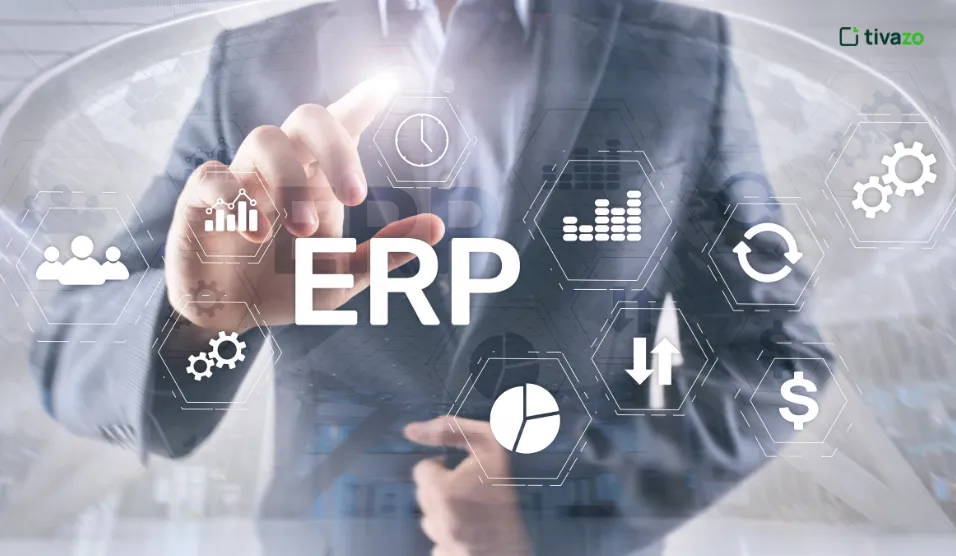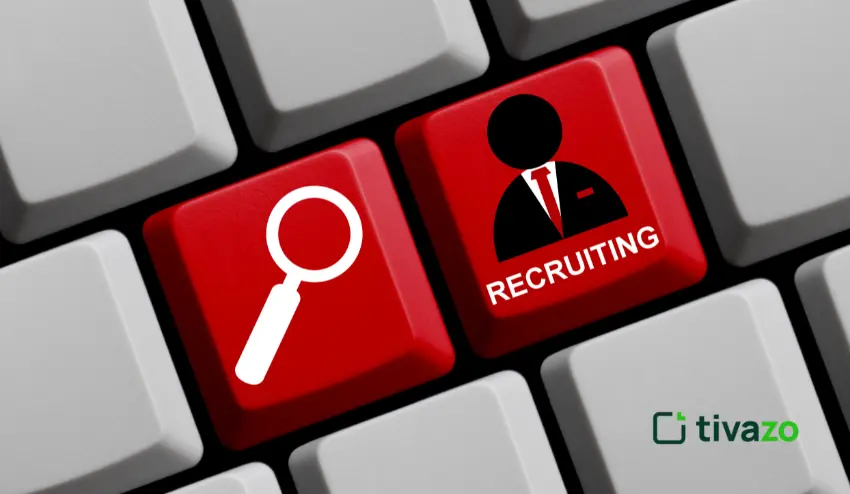According to the HG Insights report, the ERP market is experiencing major growth in 2025. By the end of the year, it is expected to reach $147.7 billion in spending.
Experts highlight that companies are increasingly moving to ERP solutions as they need to improve their internal processes and organize the workflows for more efficient collaborations. This is exactly what ERPs offer. Surprisingly, not only big enterprises need ERPs. SMEs also increased their share of the ERP clients market.
The benefits of ERPs, such as streamlined workflows and better visibility into daily operations, make these solutions a must-have for modern companies. In this article, we explore the evolution of ERPs and their role in a more transparent and frictionless way of running a company.
What is ERP Software & How Does It Work?
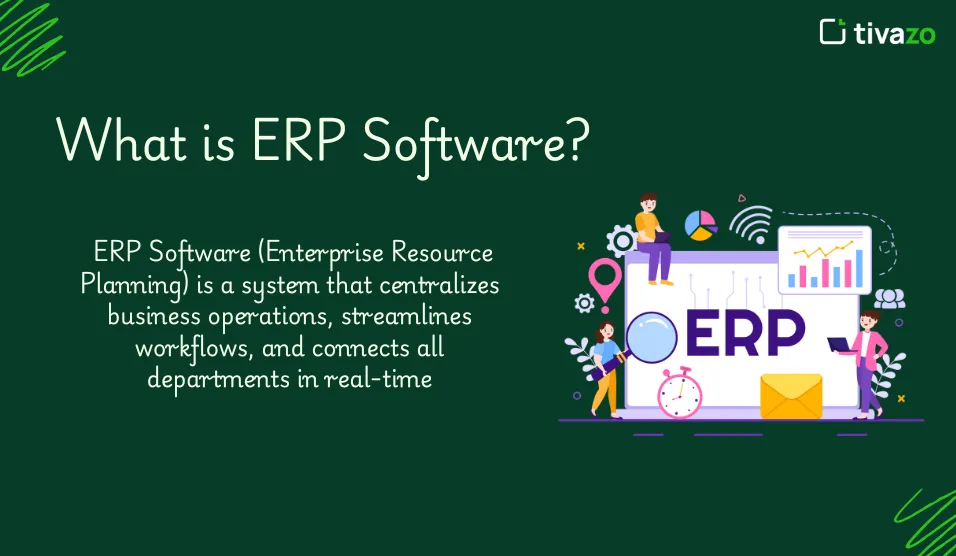
Oracle identifies ERP (Enterprise Resource Planning) as a type of software that organizations use to manage day-to-day business activities. With Enterprise Resource Planning, all departments work from the same central system. That means when data is entered in one area, it automatically updates across the entire system. For example:
- Sales enters an order.
- Inventory automatically deducts the sold items.
- Finance automatically creates an invoice.
- Warehouse automatically receives shipping instructions.
Such a workflow reduces the chances of duplicate entries. Everyone sees current and consistent information. As a result, all departments stay synchronized in real-time.
The Evolution of ERPs
Before becoming Enterprise Resource Planning, how we know them today, the first systems were much more primitive. They were first launched in the 1960s as basic software for tracking inventory and production, known as MRP.
In the 1980s, the MRP functions expanded, making it possible to manage the entire manufacturing process. That was the MRP II era.
By the 1990s, MRP II evolved to include all business departments, like finance and HR. Then, it finally earned the name “ERP.” Modern Enterprise Resource Planning systems are mostly cloud-based. They offer real-time data management and often include AI for predictions and automation. But the transformation is still happening.
For example, Oracle’s Enterprise Resource Planning integrates AI to predict its cash flow and calculate revenue and potential expenses. Dropbox uses Oracle Cloud ERP to automate financial processes and get a clearer view of its global operations. ERPs continue shifting toward smarter and more connected systems.
How Do ERPs Simplify Operations for Maximum Productivity?
You know that feeling of working in the dark, especially when you’re trying to build your team? All the information is scattered across different places. Resumes pile up in an email inbox, interview notes live on various sticky notes, and the final approval for the job offer waits on a separate form from finance. This fractured process slows everything down.
Now, imagine a system that turns the lights on for your entire operation, and this brings a powerful new clarity to how you handle recruitment. A strong Enterprise Resource Planning acts as a single, shared brain for the company. It pulls the entire hiring workflow into a unified space that connects directly with other departments.
This unified approach transforms recruitment. The system connects an open job position directly to its approved budget. It posts new roles to career sites and gives everyone a single, clear view of every candidate’s status.
The software tracks communications and interview feedback, and the hiring team always stays aligned. And when a candidate accepts an offer, the system initiates onboarding right away. For example, it alerts IT to prepare a laptop and adds the new team member to the payroll system. This is a truly seamless onboarding for everyone involved.
This cohesive process removes the traditional friction from talent acquisition. It gives your team the space to focus on human connections, on truly understanding a candidate’s potential and building a strong team. You handle recruitment with greater intention, and each hire becomes a strategic step forward for the entire company.
Role of ERP Systems in Enhancing Customer Experience
Enterprise Resource Planning is often seen as the backbone for internal operations. However, it also plays a key role in relations with customers. Let’s explore how it works.
Take a support call, for example. Without Enterprise Resource Planning, the person on the phone might have to ask a million questions, put the customer on hold, or transfer them around.
With Enterprise Resource Planning, the support agent sees the whole history:
- What was ordered
- What problems have come up before
- What was promised by sales
When the customer sees that you are in the loop, they feel that the support team actually does their job. As simple as that, but really transformative in terms of customer experience. Zappos does this really well. They give reps a single view of the customer so nobody has to repeat themselves.
Another example is how Amazon uses its Enterprise Resource Planning to provide a more personalized shopping experience. When you log into Amazon, you see a homepage of products you’re likely to want. How?
Their system analyzes your past purchases and what you’ve looked at. It then looks at what similar customers bought. After that, the system checks real-time inventory to confirm that those items are in stock and can be shipped quickly. The “Customers who bought this also bought” and “In stock” messages are direct results of this integrated system.
The point most people miss: when Enterprise Resource Planning is working right, it makes the company feel capable, more organized, and attentive to details that are often used to be neglected. The customer notices that. Over time, that reliability builds trust and loyalty.
How Does ERP Ensure Business Scalability?
Scaling a business without ERP partners might be chaotic. Things only get more complicated:
- The more products you add, the harder it is to manage them, especially if those come from different suppliers.
- As the customer base grows, your team may find it challenging to deal with client communication and order management. It is easy to miss the important conversation or delay the order.
- If you expand to new locations, this adds layers of logistics, inventory tracking, staffing, and compliance.
In all these cases, you need a centralized system to keep track of all these processes. That’s where Enterprise Resource Planning comes in. Here’s how it actively supports your growth:
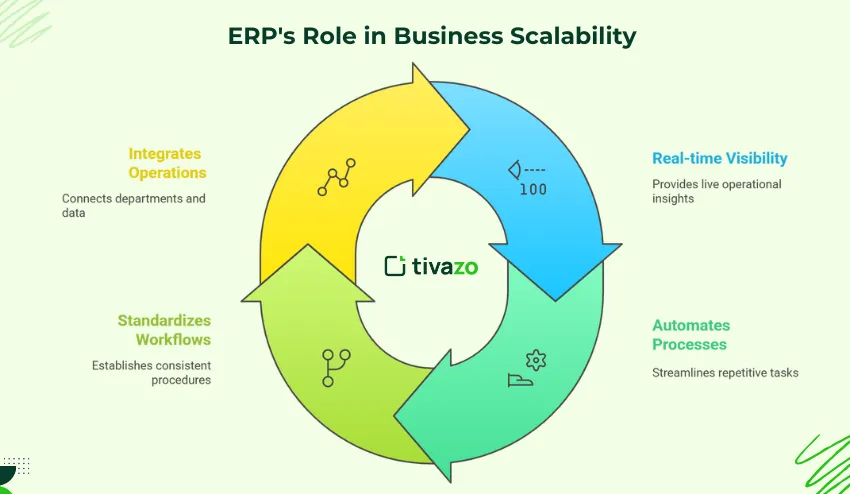
It Replaces Guessing with Knowing
An Enterprise Resource Planning gives you a live look at your entire operation. You see exactly what you have, what’s on order, and what’s selling. This means you can handle a 200% increase in orders without running out of stock or drowning in excess inventory.
It Automates the Repetitive Work
Processing 10 orders a day manually is fine. But processing 1,000 is a nightmare. An ERP (Enterprise Resource Planning) system automates the processes that expand with growth, such as order processing, invoicing, shipping notifications, and payroll.
The system takes on the extra work, so you don’t have to hire an army of administrators just to keep the lights on.
It Creates a Playbook for Your Entire Team
An ERP (Enterprise Resource Planning) builds your company’s “operating system” directly into its workflow. It standardizes how you take an order, manage a project, and handle recruitment. This means you can onboard new people into a clear, consistent system. The quality of your work doesn’t drop as your team expands.
It Connects Your Operations, So Silos Don’t Form
Growth often forces departments to specialize and become isolated. Sales doesn’t talk to the warehouse. Manufacturing doesn’t talk to finance. An ERP links your sales pipeline to your production schedule and your financial reporting.
This integrated foundation means you can add a new product line, enter a new country, or acquire another company, and all the critical information flows together.
Implementing ERP? Partner with the Right Technology Experts
What do you need to implement an ERP? Simply looking at what the market offers and then buying one that strikes this feature & costs balance seems like a logical solution. But it is not as simple as this. Even more, if you choose this path, you may face even more challenges than you’ve experienced before implementing an ERP.
To make the most out of your ERP (Enterprise Resource Planning), partner with a reliable tech company that will understand your business processes and tailor the system to your needs. SpdLoad, for example, provides custom software solutions and ERP (Enterprise Resource Planning) implementation services.
When working with their clients, they start with a discovery session to find out the daily problems teams face. Then, based on gathered data, they offer either implementing the existing solution with upgrades or building a system from scratch, if needed.
This approach is something you would want to look for when choosing an IT company to partner with. Here is a simple checklist on how to make an informed decision:
- Map your current processes. Write down exactly how each department works.
- List must-have ERP features.
- Shortlist potential IT partners.
- Ask for references or case studies.
- Give them a real workflow and see if they can explain how ERP would handle it.
- Confirm they can adapt the ERP to fit your team.
- Make sure they offer hands-on help during rollout and ongoing support.
- Get clear estimates and realistic delivery dates.
- Evaluate communication.
- Make a decision.
Conclusion: Act Now
If you feel that your current systems are holding you back, it is time to implement ERP. Do not treat it as a magic pill. This is a strategic rebuild of your operational foundation, and it should be calculated, including both risks and benefits.
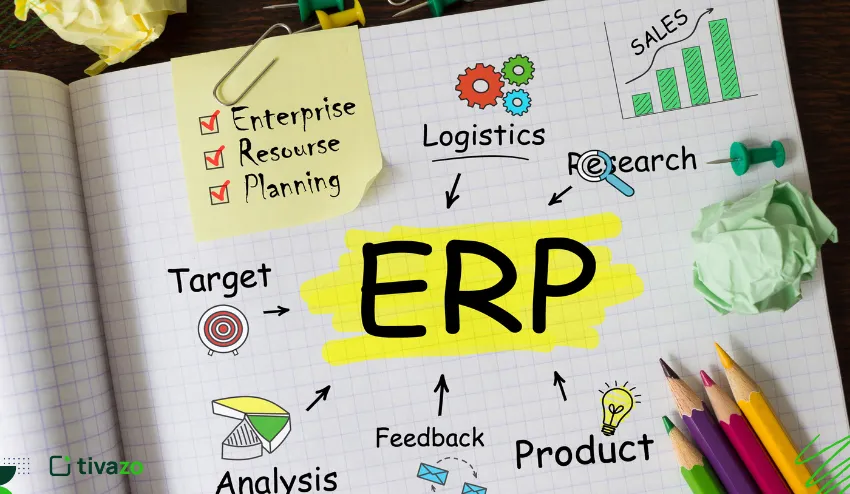
Stop planning. Start doing.
- This week: Use the checklist. Start conversations with 2-3 potential partners.
- This month: See a live demo. Get a concrete proposal.
- This quarter: Make a decision and begin your transformation.
Your competitors aren’t waiting. The market isn’t waiting. The question isn’t if you should modernize your operations, but how quickly you can afford to do it.
